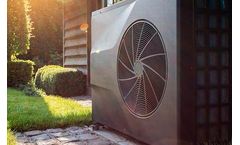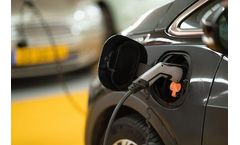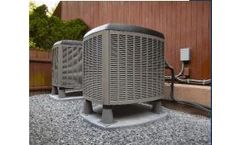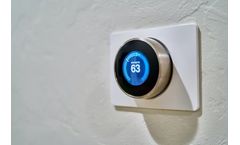Refine by
Building Heating Articles & Analysis
140 news found
From swimming pools to greenhouses, our new online platform celebrates the benefits of going geothermal! We are thrilled to announce the launch of our new website: Geothermal Stories. This platform gives visibility to real-life applications of geothermal energy from across Europe and beyond. It’s a space to explore how geothermal is being used in a variety of settings — often in ...
Networked geothermal refers to a method of heating and cooling buildings and homes by using a ground-source heat pump to transfer liquid via a looped pipe system. In the case of network geothermal, this interconnected system allows energy to be shared between customers, allowing heat rejected by a business for cooling purposes to ...
Accelerating commercial decarbonization: Through the Better Buildings Commercial Building Heat Pump Accelerator, announced earlier this year, DOE is working with leading manufacturers to produce higher efficiency and life cycle cost-effective heat pump rooftop units. ...
With the most certain pledges to coal power and fossil fuel-based building heating, the majority of European countries intend to lessen their need on fossil fuels. ...
Remember the heat dome Portland and Vancouver experienced in the summer of 2021? While it was 116 degrees outside, the building remained a comfortable 72 degrees inside. Previously, if the temperature climbed above 90, the occupants would go home because the building would be too warm. No longer. Happy tenants. Happy building ...
Low-income communities of color also bear a larger burden from extreme heat because they tend to live in older buildings that lack adequate insulation and cooling. ...
The key to heating an 834-unit apartment tower under construction on the Brooklyn waterfront will be a hole in the ground. ...
The heating of most buildings around the world – such as homes, offices, schools and factories – still relies on fossil fuels, particularly natural gas. ...
“We are moving swiftly to deliver cleaner, cheaper energy to every American community by building a modern and reliable electric grid,” said U.S. Secretary of Energy Jennifer M. ...
This pyrolysis plant for sale takes almost any rubber and turns it into oil. The device heats the rubber to a quite high temperature where it breaks down and turns into oil. The oil is high quality and it is also refined into gasoline.The oil how the pyrolysis plant makes is top quality in fact it is ideal for heating buildings or cooking. The ...
National Grid is working to significantly reduce greenhouse gas emissions across the power, transportation, and building heat sectors, the latter being responsible for nearly 40 percent of total emissions in its service territory. ...
ComEd embraced the feedback it heard and proposed a plan to address the priorities of the communities it serves.The key components of the BE Plan include: Residential Program The BE Plan includes $15 million annually in incentives that will reduce upfront costs related to purchase and installation of EVs, in-home charging stations, and non-transportation electrification equipment (such as ...
"Tapping into the emerging clean energy market is a huge economic opportunity that will bring a bolstered manufacturing sector, good paying jobs, and a brighter, cleaner future to Texas and communities across America." Space conditioning and water heating account for 46% of building emissions and over 40% of primary energy used in American residential and ...
The webinars will help these developers, owners and operators of heat networks prepare for formal regulation of the sector and meet the triple challenge of delivering affordable, resilient, green heat to customers. ...
Local area energy planning for low carbon heat networks is the topic of a presentation by Switch2 Energy at the Future of Heat Conference in Birmingham on Wednesday 30 March. ...
"That's why we want to dramatically increase our energy efficiency incentives, make electric vehicle charging more convenient, and encourage heat pumps as an alternative to gas heating." The sustainability investments Con Edison proposes are consistent with the company's Clean Energy Commitment. ...
"Doing more of the same is no longer an option. Heat network owners and operators will need to achieve a step change in efficiency and environmental performance, while also continuing to provide heat cost effectively and reliably to residential customers. " The guide covers existing and future legislation that will support rapid growth of the ...
CUB's latest study, "Better Heat: The Economics of Residential Building Electrification in the City of Chicago," focuses on electric "heat pumps," an ever-improving technology that can cool a home in the summer, but in the winter functions like a central air-conditioning unit in reverse, circulating hot air into a household. ...
Early Years Back in the early 1980s the world was still feeling the aftershocks of the oil crises of the 1970s and energy efficiency was becoming a key concept across various industries. As part of this agenda, heat recovery technology was gaining in popularity, and Steven Pither, who until the acquisition was CEO of the HRS Group, recognised that these trends were only going to become more ...
REA express disappointment that the already delayed Heat and Building Strategy could be delayed further; The delay to publish the document, originally due last year, has seen the renewable heat sector’s routes to market limited and the sector stall when we need to be intensifying our efforts to decarbonise ...



















